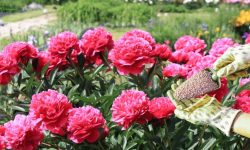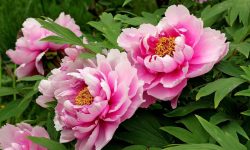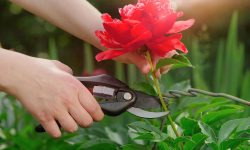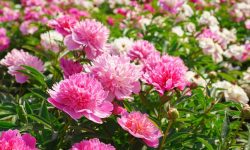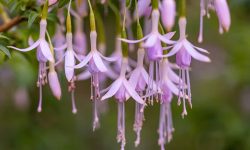Begonias are one of the most rewarding and visually stunning plants you can grow at home. With their wide variety of leaf shapes, flower colors, and growth habits, begonias can bring beauty to windowsills, patios, and gardens alike. Even if you’ve never cared for a plant before, begonias are a beginner-friendly choice that will thrive with a little love and attention.
In this detailed guide, you’ll learn how to grow and care for begonias throughout the year—indoors or outdoors—by understanding their needs for light, water, soil, temperature, and more. Whether you’re working with tuberous begonias, fibrous-rooted types, or the beloved Rex begonias known for their foliage, this article will equip you to nurture them successfully in any season.
Understanding the Begonia Family

Types of Begonias
Begonias are part of the Begoniaceae family, which includes over 1,800 species and thousands of hybrids. While the diversity can seem overwhelming, most begonias fall into three primary categories based on their growth characteristics.
Tuberous begonias produce showy blooms in vibrant colors and go dormant in winter. These are typically grown as annuals in cold regions but can be overwintered indoors.
Fibrous-rooted begonias include wax begonias, angel wing begonias, and cane-type varieties. These plants are often evergreen and can thrive year-round indoors or in warm climates.
Rhizomatous begonias, including the popular Rex types, are admired for their dramatic foliage. They grow from thickened stems (rhizomes) and are generally kept as indoor plants in cooler climates.
Each type has unique traits, but they share similar needs when it comes to basic care.
Light Requirements for Healthy Begonias
Finding the Right Balance
Light is crucial for the growth and flowering of begonias, but too much sun can cause leaf burn while too little can lead to leggy, weak plants.
Most begonias thrive in bright, indirect light. If you’re growing them indoors, place them near a window where they receive filtered sunlight—an east- or north-facing window is usually ideal. Avoid harsh midday sun that can scorch their delicate leaves, especially for Rex and cane-type begonias.
If grown outdoors, situate begonias in areas that receive morning sun and afternoon shade, or dappled light throughout the day. Hanging baskets under a shaded patio or containers on a covered porch are perfect spots.
The Ideal Temperature and Humidity
Begonias Are Tropical at Heart
Begonias naturally hail from tropical and subtropical regions, so they prefer moderate temperatures and high humidity. Most begonias grow best in temperatures between 60°F and 75°F (15°C to 24°C). They are sensitive to cold and should be protected from temperatures below 50°F (10°C).
Humidity is another key factor, particularly for indoor begonias. Dry indoor air, especially during winter, can cause leaf edges to brown or curl. To maintain humidity, you can place your plant on a pebble tray filled with water or use a small room humidifier. Grouping begonias with other humidity-loving plants also creates a beneficial microclimate.
Avoid placing begonias near heating vents, air conditioners, or drafty windows, as sudden temperature changes can stress the plant.
Watering Your Begonias the Right Way
Timing and Technique Matter
Watering is one of the most common challenges for new begonia growers. These plants like evenly moist soil, but not soggy conditions. Overwatering leads to root rot, especially in poorly draining pots, while underwatering can dry out the delicate roots and cause wilting.
A good practice is to water when the top inch of the soil feels dry. Insert your finger into the soil to gauge moisture levels rather than relying on a fixed schedule. Use room temperature water and water at the base of the plant to avoid wetting the leaves, which can lead to fungal issues.
Reduce watering in winter, particularly for tuberous begonias that enter dormancy. For indoor begonias, always ensure the pot has drainage holes and never let the plant sit in standing water.
Choosing the Best Soil and Container
Soil Composition
Begonias need well-draining, light soil with good aeration. A standard potting mix with added perlite, orchid bark, or coco coir provides the right balance of moisture retention and drainage. Some gardeners prefer a soilless mix to further reduce the risk of overwatering.
Avoid heavy soils that stay wet for too long. For rhizomatous begonias, the soil should be slightly acidic (pH 5.5–6.5) and airy enough to support the shallow root system.
Pot Selection
Choose a pot with drainage holes, regardless of the type of begonia you are growing. Terracotta pots are ideal for gardeners who tend to overwater, as they allow excess moisture to evaporate through the walls. Plastic or glazed ceramic pots retain moisture longer and may be better in hot, dry environments.
Always size the pot appropriately. A container that is too large can hold too much water, while one that is too small will restrict root growth and dry out quickly.
Feeding and Fertilizing Begonias
Nutritional Needs
Like all flowering plants, begonias benefit from regular feeding during their active growing season, which typically spans spring through early fall. A balanced fertilizer with equal parts nitrogen (N), phosphorus (P), and potassium (K) supports both healthy foliage and blooming.
You can use a liquid houseplant fertilizer diluted to half strength every two to four weeks. Tuberous begonias respond well to a bloom booster fertilizer with higher phosphorus content once they begin forming flower buds.
Avoid over-fertilizing, which can lead to salt buildup in the soil and leaf tip burn. Flush the pot with plain water occasionally to prevent this problem.
In winter, reduce or pause fertilization altogether, especially if the plant’s growth slows or stops.
Pruning and Maintenance
Keeping Your Begonia in Top Shape
Regular maintenance ensures your begonia stays attractive and healthy. Pinch back leggy stems to encourage fuller growth, especially for cane and trailing varieties. Remove any yellowing or dead leaves promptly to reduce the risk of disease and to redirect the plant’s energy toward new growth.
For flowering begonias, deadheading spent blooms helps prolong the blooming cycle and keeps the plant tidy. Always use clean, sharp scissors or pruning shears to avoid damaging the stems.
Cleaning the leaves with a damp cloth occasionally removes dust, improves photosynthesis, and makes the plant look fresher, particularly for foliage begonias like Rex types.
Common Problems and How to Fix Them
Leaf Issues
Brown leaf tips are often due to low humidity or over-fertilization, while yellowing leaves may signal overwatering or poor drainage. If leaves are dropping suddenly, evaluate the plant’s exposure to drafts or sudden temperature swings.
Fungal and Bacterial Diseases
Begonias can be susceptible to powdery mildew, botrytis, or bacterial leaf spot, especially if air circulation is poor. Always water at the base, avoid overcrowding, and isolate affected plants to stop the spread. In severe cases, remove the damaged leaves and treat with a fungicide.
Pest Infestations
Watch for aphids, mealybugs, spider mites, and fungus gnats, especially in indoor settings. These pests thrive in warm, moist environments. Wipe leaves with a neem oil solution or insecticidal soap at the first sign of infestation, and allow the soil to dry slightly to deter gnats.
Growing Begonias Indoors vs. Outdoors
Indoor Begonia Care
Indoors, begonias can thrive year-round if their light, humidity, and watering needs are met. They are excellent for bright bathrooms, sunny kitchens, or any room with consistent light and warmth.
Avoid moving indoor begonias around too often, as sudden changes in environment can stress the plant. Use lightweight pots and consider rotating them occasionally to encourage even growth.
Outdoor Begonia Care
In USDA zones 10–11, begonias can grow outdoors year-round. In cooler regions, they are best grown in containers during the warmer months and brought indoors before the first frost. Tuberous begonias, in particular, need to be dug up and stored during winter if planted directly in the garden.
Outdoor begonias benefit from early morning sun and protection from harsh afternoon rays. Make sure to monitor them for pests and give them some protection during heavy rain or strong winds.
Overwintering Begonias
Preparing for Dormancy
Tuberous begonias enter a dormant phase in late fall. As the foliage begins to yellow and die back, reduce watering gradually. Once the plant has fully died back, remove the tubers from the soil, clean them gently, and store them in a cool, dry, dark place until spring.
Place them in a breathable container like a cardboard box filled with dry peat moss or sawdust, and check periodically for mold or rot.
Indoor Storage for Other Types
Fibrous and rhizomatous begonias can remain indoors throughout the year. Reduce watering and withhold fertilizer during the coldest months, but maintain light and humidity as much as possible to prevent leaf drop.
Frequently Asked Questions (FAQ)
What type of begonia is easiest for beginners?
Wax begonias (fibrous-rooted types) are generally the easiest for beginners. They are hardy, adaptable, and tolerate a range of indoor and outdoor conditions. These begonias require minimal maintenance and can thrive with basic care—moderate light, even moisture, and occasional feeding.
Can begonias survive indoors all year?
Yes, many begonias—especially Rex, cane-type, and fibrous-rooted varieties—are excellent indoor plants and can thrive year-round. Just ensure they receive bright, indirect sunlight, moderate humidity, and are kept away from cold drafts or heating vents. Tuberous begonias, however, typically go dormant in winter and require special storage.
How often should I water my begonia?
Water your begonia when the top inch of soil feels dry to the touch. The exact frequency depends on your indoor temperature, humidity, pot size, and plant type. Overwatering is a common issue, so avoid watering on a fixed schedule and instead use your finger to test the soil.
Why are my begonia leaves turning yellow?
Yellow leaves can result from overwatering, poor drainage, low light, or temperature stress. Check the root zone for soggy soil and make sure your pot has proper drainage holes. Also, consider whether your begonia is getting too much direct sun or not enough light, both of which can stress the plant.
Do begonias need humidity?
Yes, most begonias prefer moderate to high humidity, especially indoor varieties like Rex or rhizomatous types. If your home is dry, especially in winter, use methods like a pebble tray, humidifier, or grouping plants to raise humidity levels around your begonia.
Can I propagate begonias at home?
Absolutely. Begonias are easy to propagate from leaf, stem, or rhizome cuttings depending on the type. Leaf cuttings work well for Rex begonias, while cane or fibrous types root easily from stem cuttings placed in water or moist soil. Propagation is a great way to expand your begonia collection or share plants with friends.
How do I overwinter tuberous begonias?
To overwinter tuberous begonias, allow the foliage to die back in fall. Then, dig up the tubers, brush off soil, and store them in a cool, dry, dark location such as a basement or garage. Keep them in a breathable container filled with peat moss or sawdust, and replant in spring once the risk of frost has passed.
Do begonias need fertilizer?
Yes, begonias benefit from regular feeding during their active growing season (spring through early fall). Use a balanced, diluted liquid fertilizer every 2–4 weeks. Avoid over-fertilizing, which can damage the roots and cause salt buildup in the soil.
Can begonias grow in full sun?
While some varieties like wax begonias can tolerate full sun in cooler climates, most begonias prefer bright but indirect light. Direct sun, especially in hot weather, can scorch leaves and dry out the soil too quickly. For outdoor growing, choose a spot with morning sun and afternoon shade.
Are begonias toxic to pets?
Yes, begonias are toxic to cats and dogs, particularly the roots and tubers. They contain soluble calcium oxalates which can cause mouth irritation, vomiting, and drooling if ingested. Keep begonias out of reach of pets and consider non-toxic alternatives if you’re concerned about pet safety.
Conclusion: Growing Begonias Year-Round Made Simple
Growing begonias may seem intimidating at first, especially given their tropical nature and wide variety. But once you understand their fundamental needs—bright, indirect light, moderate moisture, and rich but airy soil—you’ll realize they are surprisingly adaptable and rewarding plants.
Whether you’re drawn to their showy flowers, decorative leaves, or versatility in containers and hanging baskets, begonias can fit into almost any space or garden. With thoughtful care and a little observation, even beginners can grow healthy, beautiful begonias all year long.
So, whether you’re planning to brighten your windowsill or create a lush patio display, begonias are ready to reward your efforts with color, texture, and long-lasting beauty.

